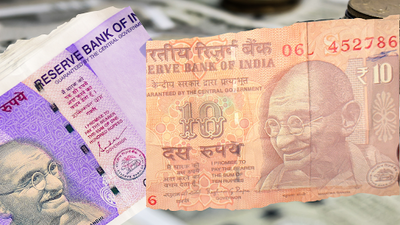Have soiled, torn or damaged currency notes? Check RBI guidelines for exchange

NEW DELHI: Tearing or damaging a currency note is a common mishap, but to ensure it doesn’t lead to financial loss, the Reserve Bank of India (RBI) has laid down clear rules for the exchange of damaged currency.
The guidelines are meant to ensure that soiled, mutilated, or even badly deteriorated notes can be replaced based on the level of damage. These guidelines are mandatory for all authorised bank branches.
Soiled notes
Currency that is dirty, discoloured, or bears minor tears is classified as soiled. Such notes can be exchanged at any bank branch, with or without holding an account. Banks either replace the notes on the spot or credit the amount to the customer’s account.
Mutilated notes
Notes that are torn, missing portions, or severely damaged but still show essential security features are considered mutilated. These are evaluated under the RBI’s Note Refund Rules and must be presented at designated bank branches. The refund amount depends on the extent of damage.
Severely damaged notes
Currency that has been burnt, stuck together, or is almost entirely destroyed falls into this category. These notes are not eligible for regular exchange and must be submitted to RBI’s Issue Offices for expert evaluation and possible compensation.
Exchange procedure at banks
All commercial bank branches are mandated to accept soiled and mutilated notes from the public, regardless of whether the individual holds an account. Bank staff assess the note’s condition and process replacements based on RBI protocols.
Key guidelines for the public
- Avoid using tape or staples on damaged notes.
- Present notes in their original condition for smooth processing.
- Banks are obligated to accept notes that meet RBI exchange criteria.
(With inputs from Centre for Investment Education and Learning content which appeared in Economic Times)





